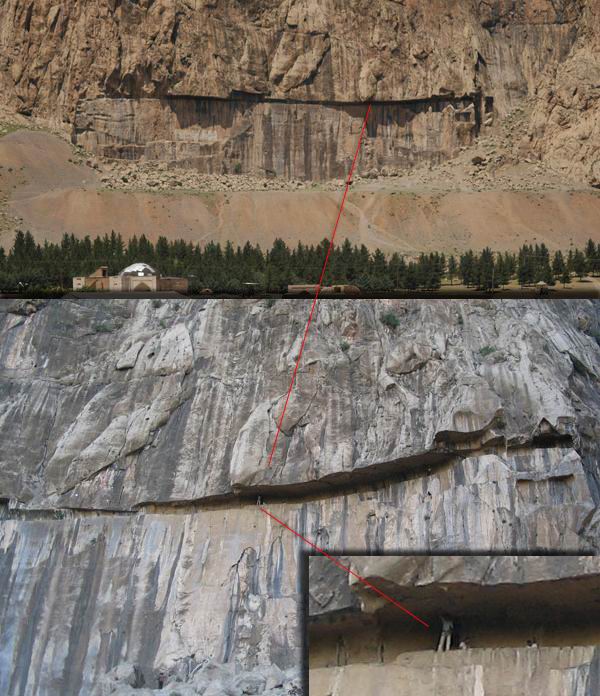


Notice: This is the official website of the All Empires History Community (Reg. 10 Feb 2002)
Semiramis or Farhad, Mystery of Behistun(Bagistan) |
Post Reply 
|
| Author | ||
Cyrus Shahmiri 
Administrator 

King of Kings Joined: 07-Aug-2004 Location: Iran Online Status: Offline Posts: 6240 |
 Quote Quote  Reply Reply
 Topic: Semiramis or Farhad, Mystery of Behistun(Bagistan) Topic: Semiramis or Farhad, Mystery of Behistun(Bagistan)Posted: 31-Oct-2013 at 06:07 |
|
|
Farhadtarash (Farhad Cut), a huge rectangle stone carving on Behistun (Bagistan), is really one of wonders of the world.
 There are several legends and stories about it but none of them seems to be real. The most recent story dates back to late Sassanid period when Khosrow II, one of the greatest Sassanid kings, ruled in Iran: http://en.wikipedia.org/wiki/Khosrow_and_Shirin
The important point about this story is that it doesn't talk about any relief or inscription, so it can be said that almost nothing has been changed in Farhadtarash in the last 1500 years. But ancient Greek historians say some other things about it, however most of them attribute it to a legendary queen, Semiramis: http://en.wikipedia.org/wiki/Semiramis
One of them is Ctesias: http://en.wikipedia.org/wiki/Ctesias He was a Greek physician and historian from Cnidus in Caria. Ctesias, who lived in the 5th century BC, was physician to Artaxerxes Mnemon, whom he accompanied in 401 BC on his expedition against his brother Cyrus the Younger. Ctesias' 'History of Persia': Tales of the Orient, page 123:  As you read it talks about an image of a queen and hundred spearmen, of course it seems to be goddess Inana/Ishtar, instead of Semiramis, because there are some similar rock carvings in Iran, like Anobanini bas-relief. Of course the most important thing is that inscription, it could say many things about the history of that period. Edited by Cyrus Shahmiri - 31-Oct-2013 at 06:13 |
||

|
||
 |
||
Post Reply 
|
| Forum Jump | Forum Permissions  You cannot post new topics in this forum You cannot reply to topics in this forum You cannot delete your posts in this forum You cannot edit your posts in this forum You cannot create polls in this forum You cannot vote in polls in this forum |
Bulletin Board Software by Web Wiz Forums® version 9.56a [Free Express Edition]
Copyright ©2001-2009 Web Wiz
This page was generated in 0.092 seconds.
Copyright ©2001-2009 Web Wiz
This page was generated in 0.092 seconds.











 Printable Version
Printable Version Google
Google Delicious
Delicious Digg
Digg StumbleUpon
StumbleUpon Windows Live
Windows Live Yahoo Bookmarks
Yahoo Bookmarks reddit
reddit Facebook
Facebook MySpace
MySpace Newsvine
Newsvine Furl
Furl Topic Options
Topic Options